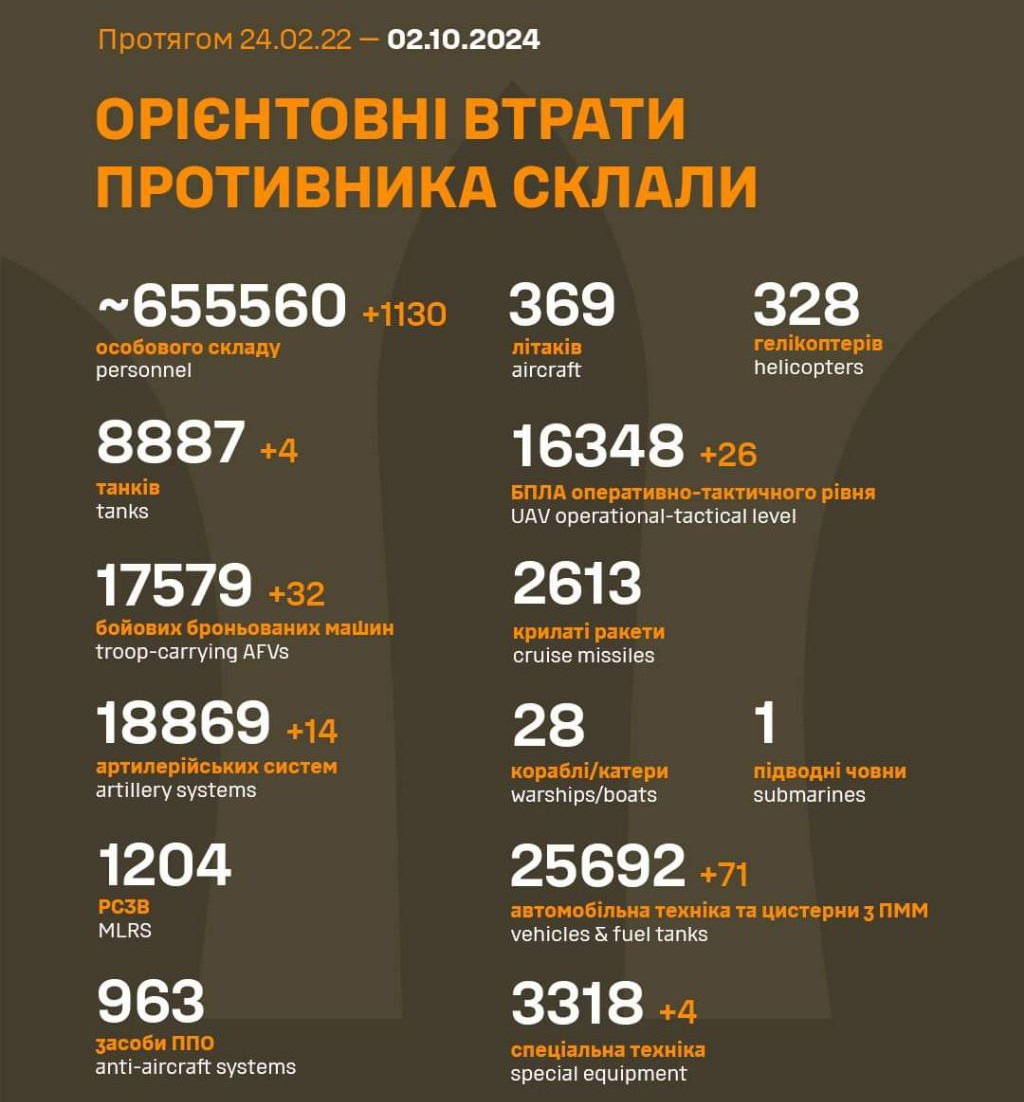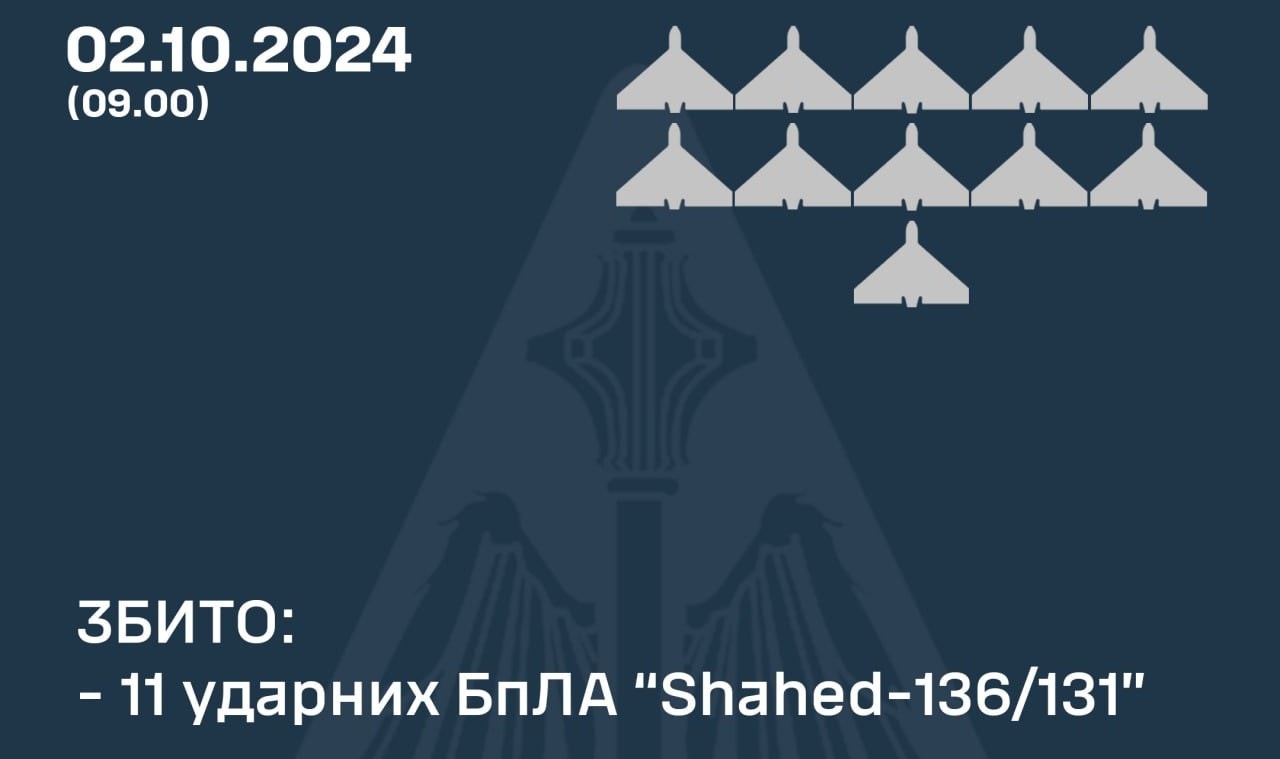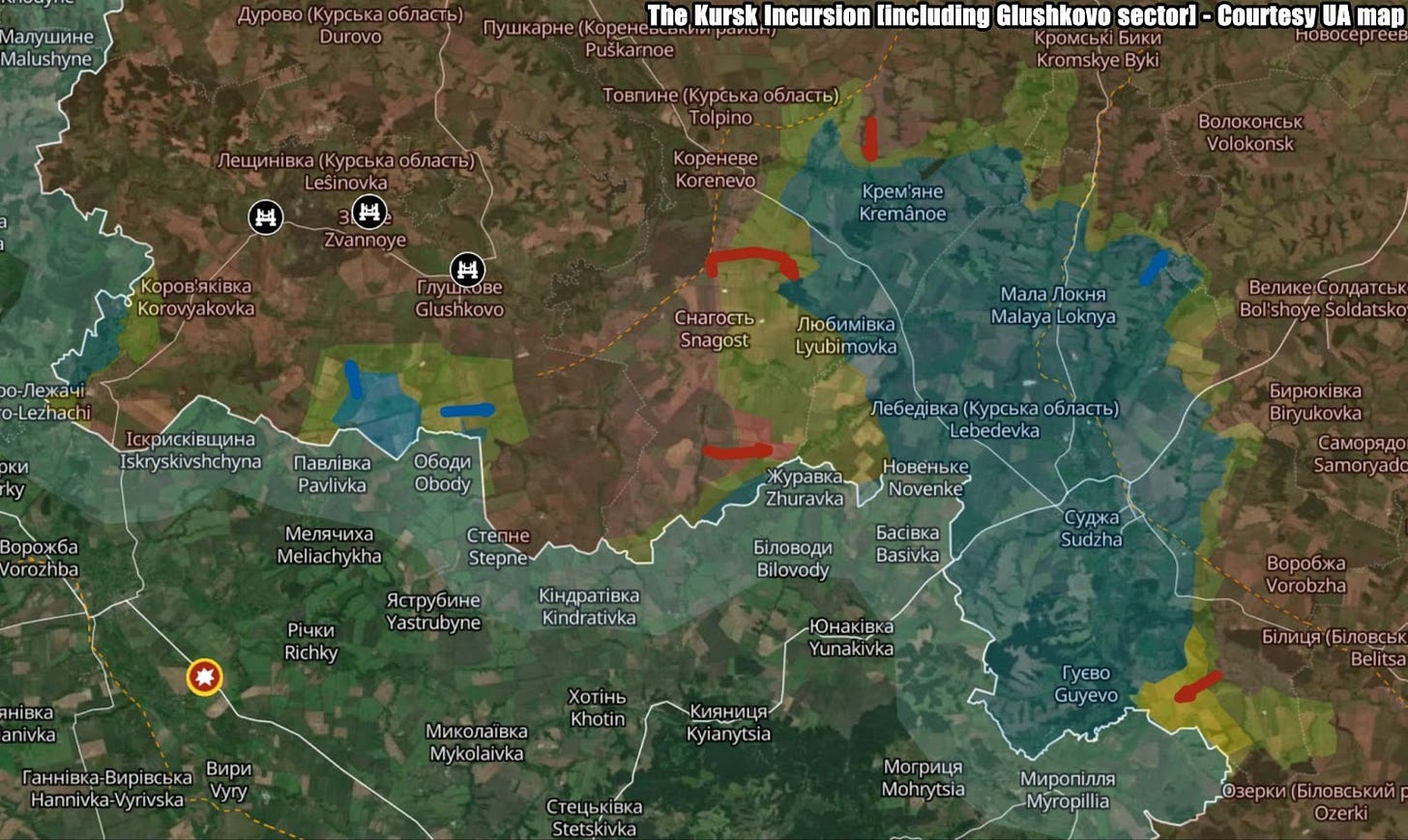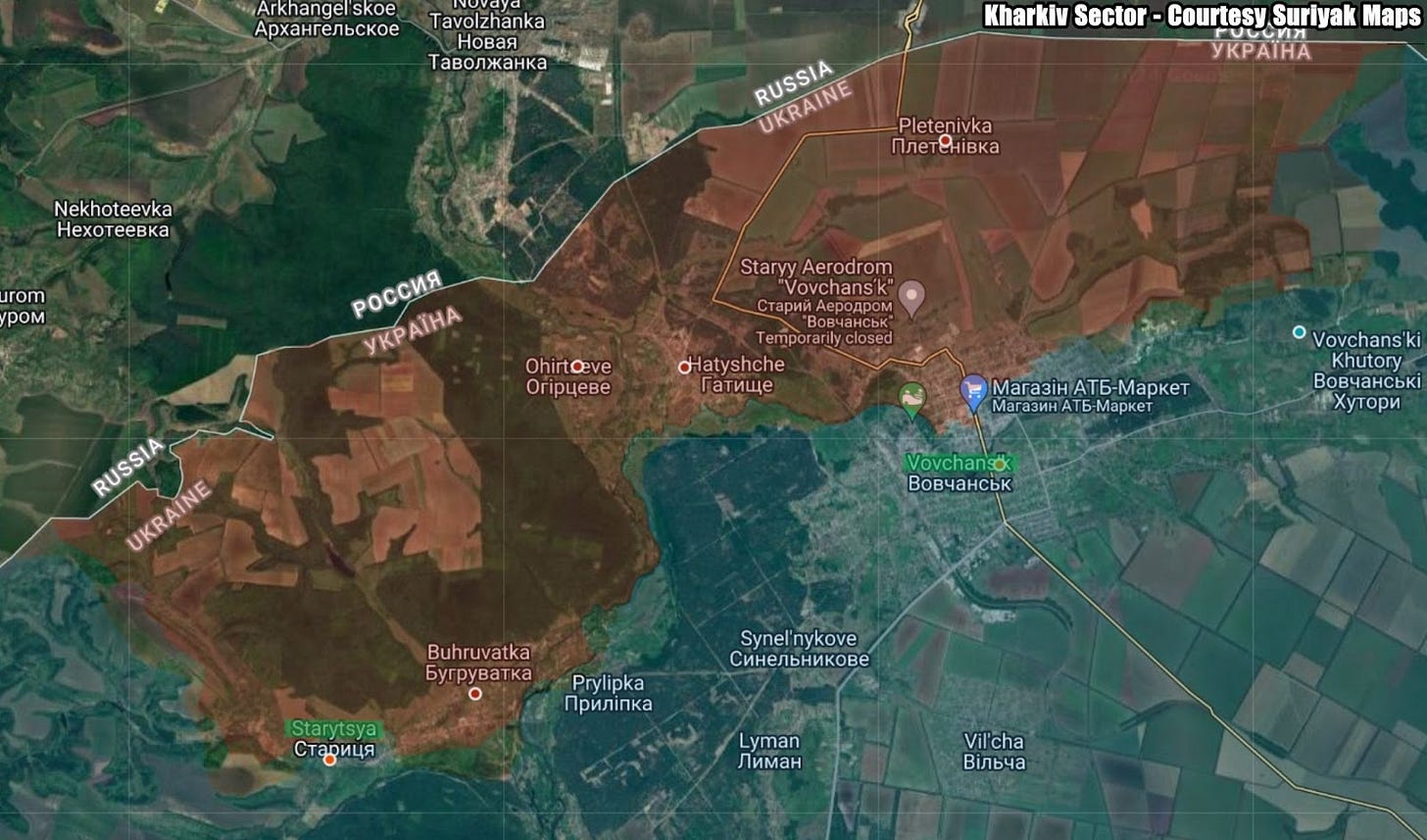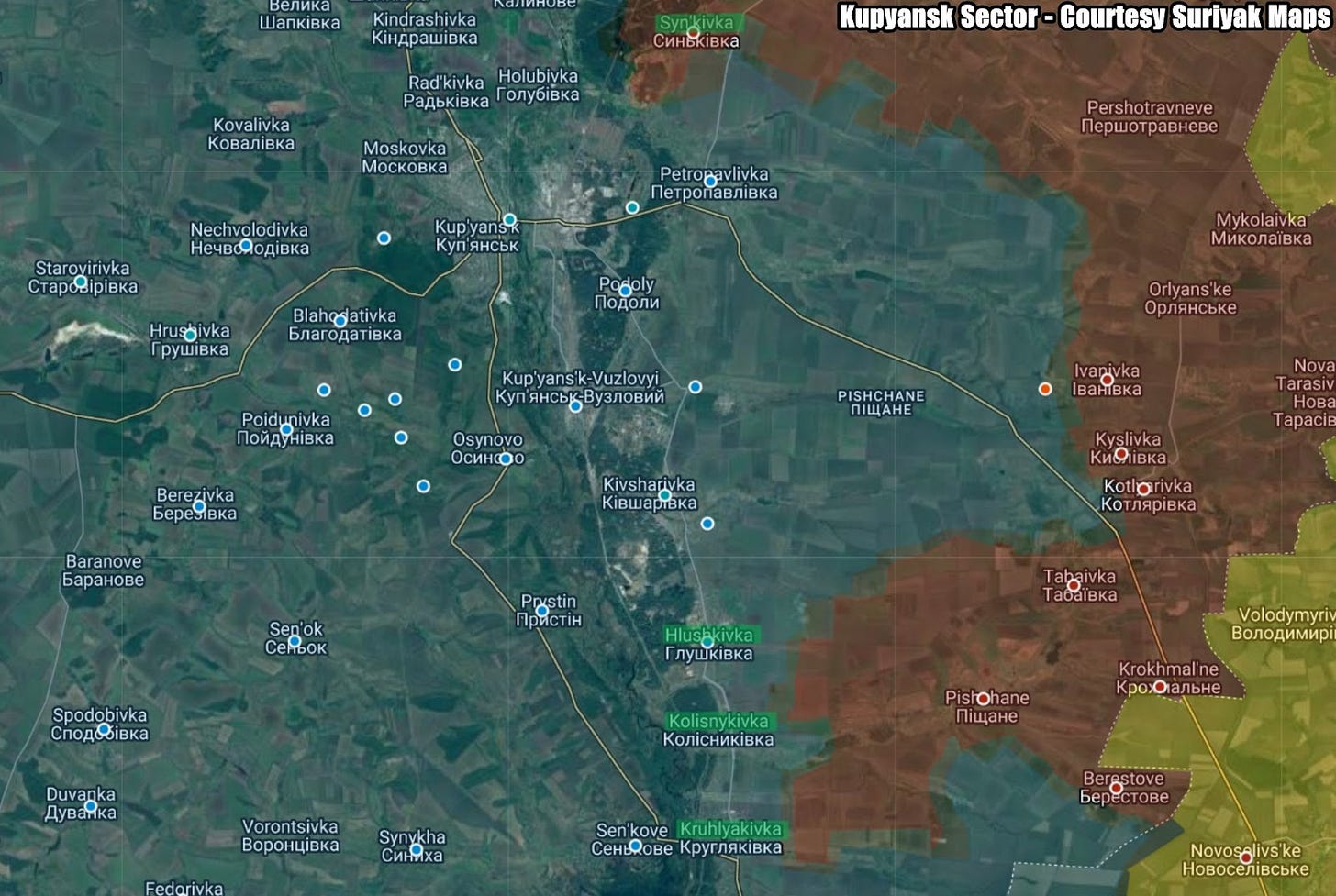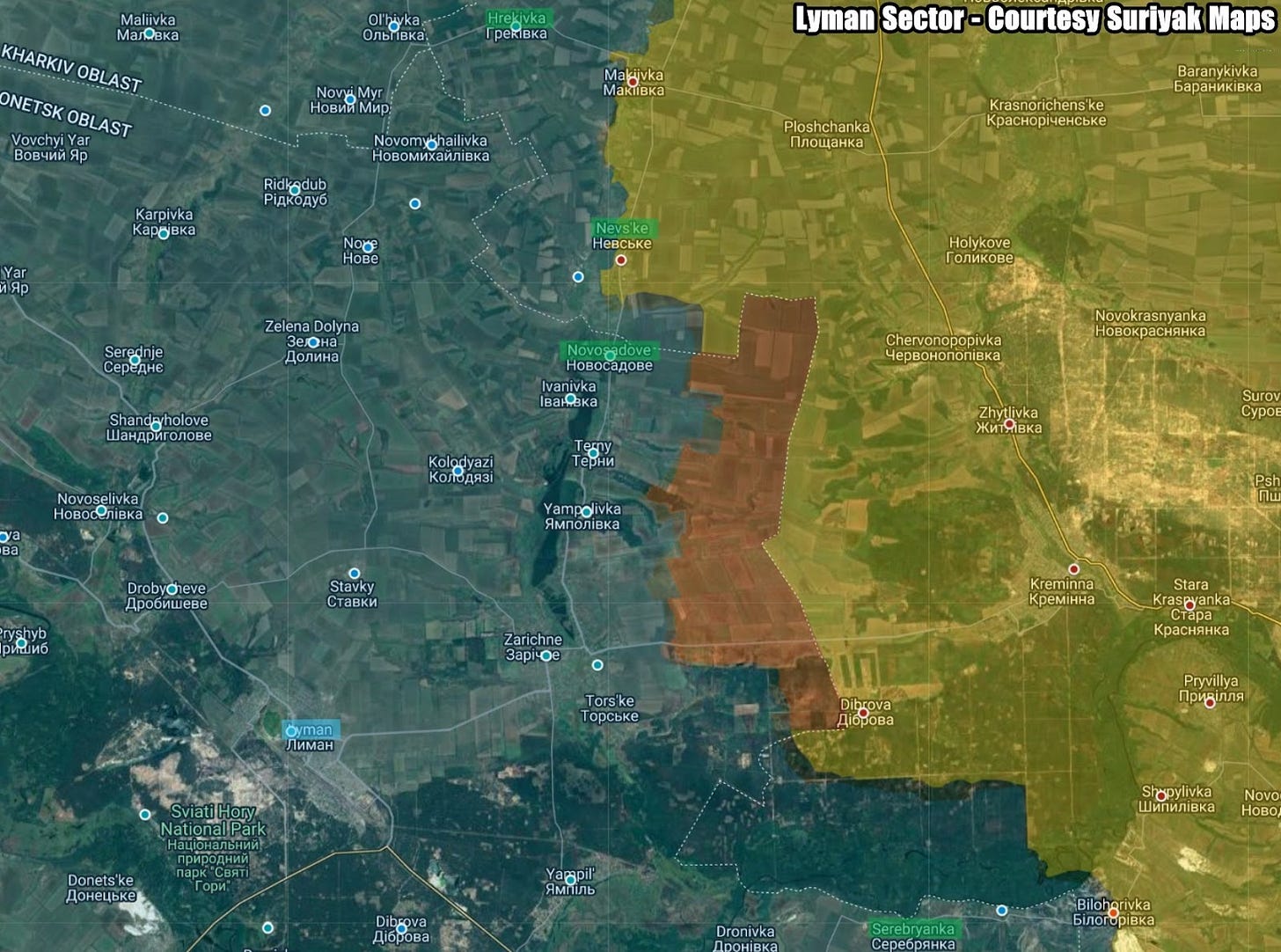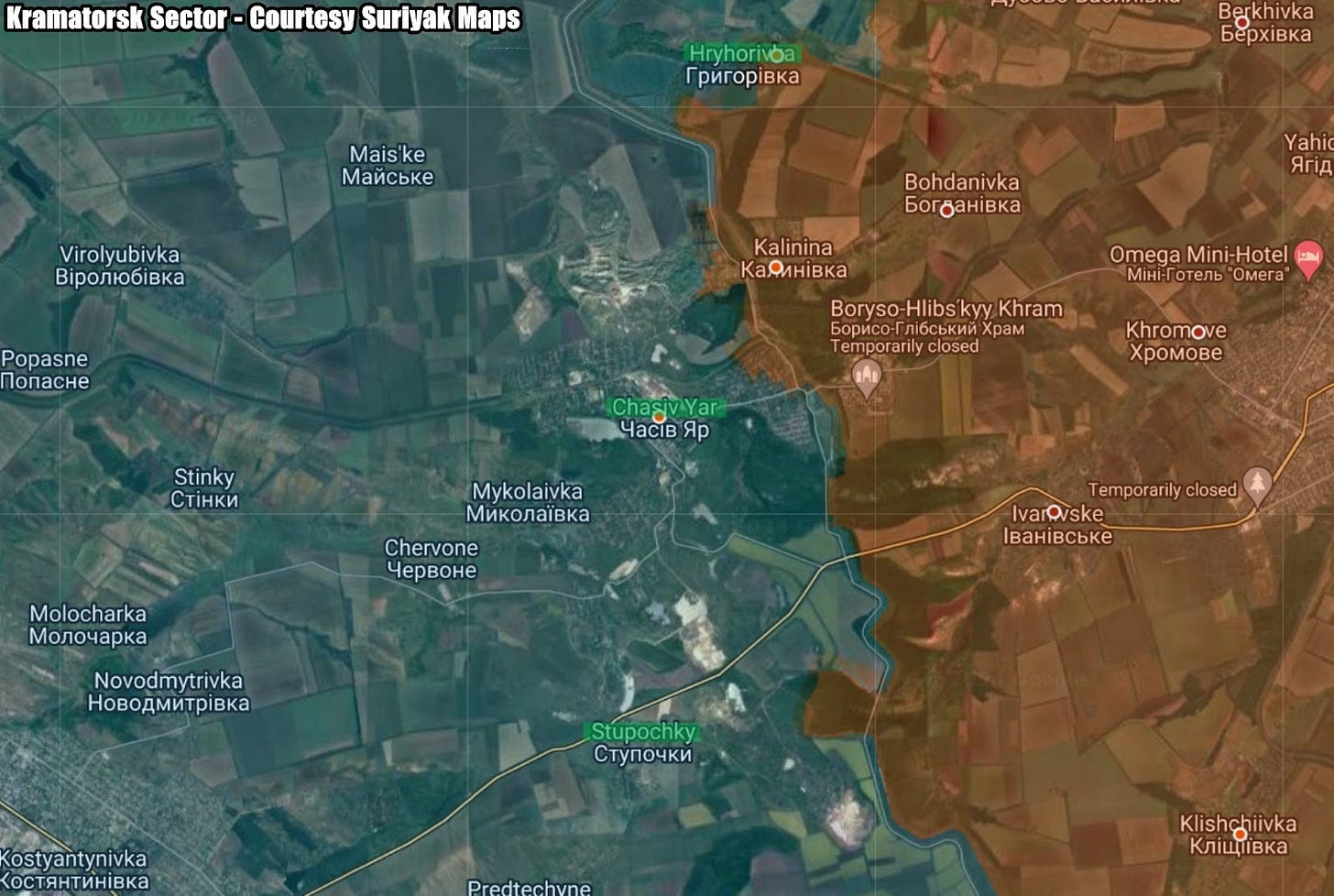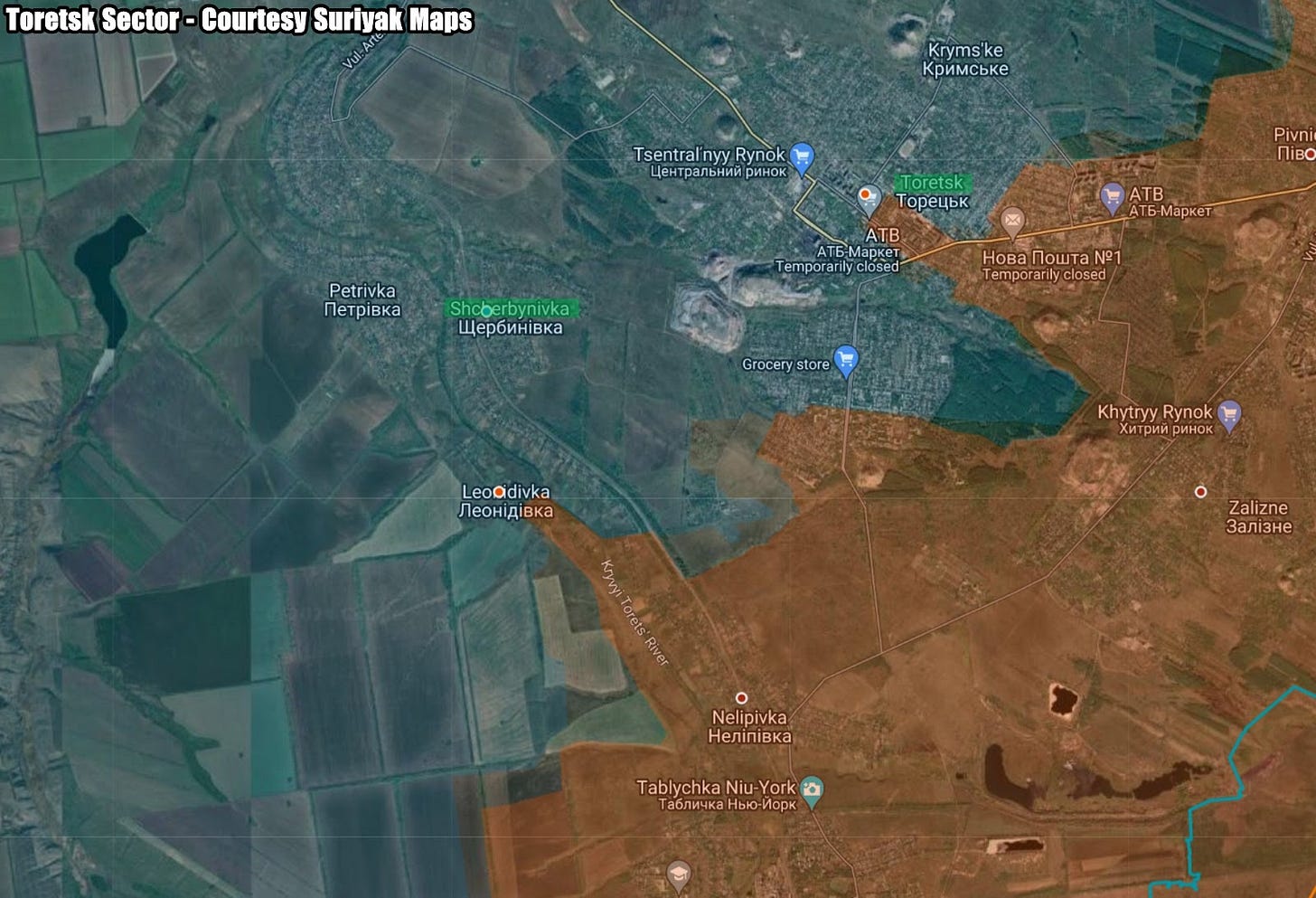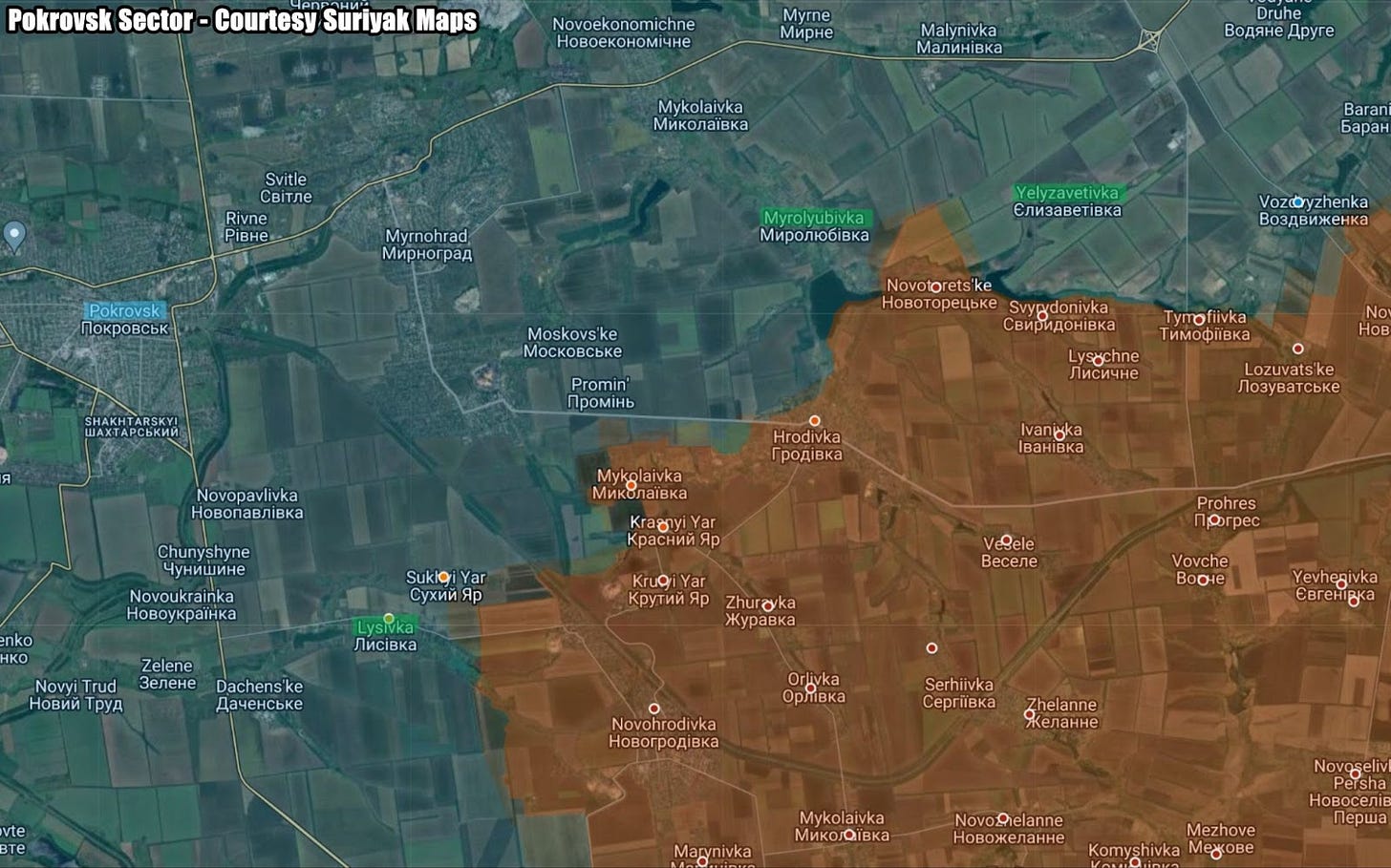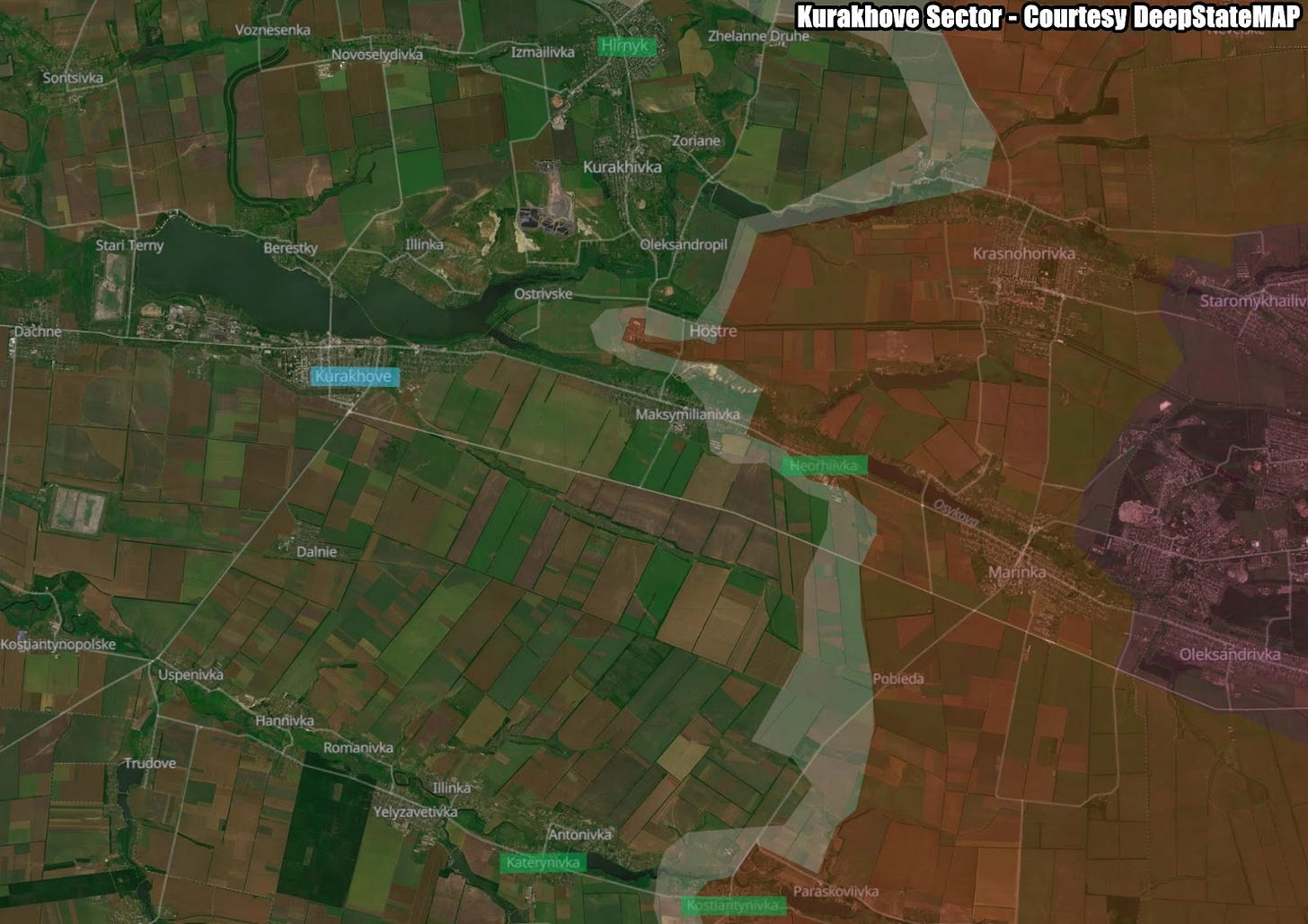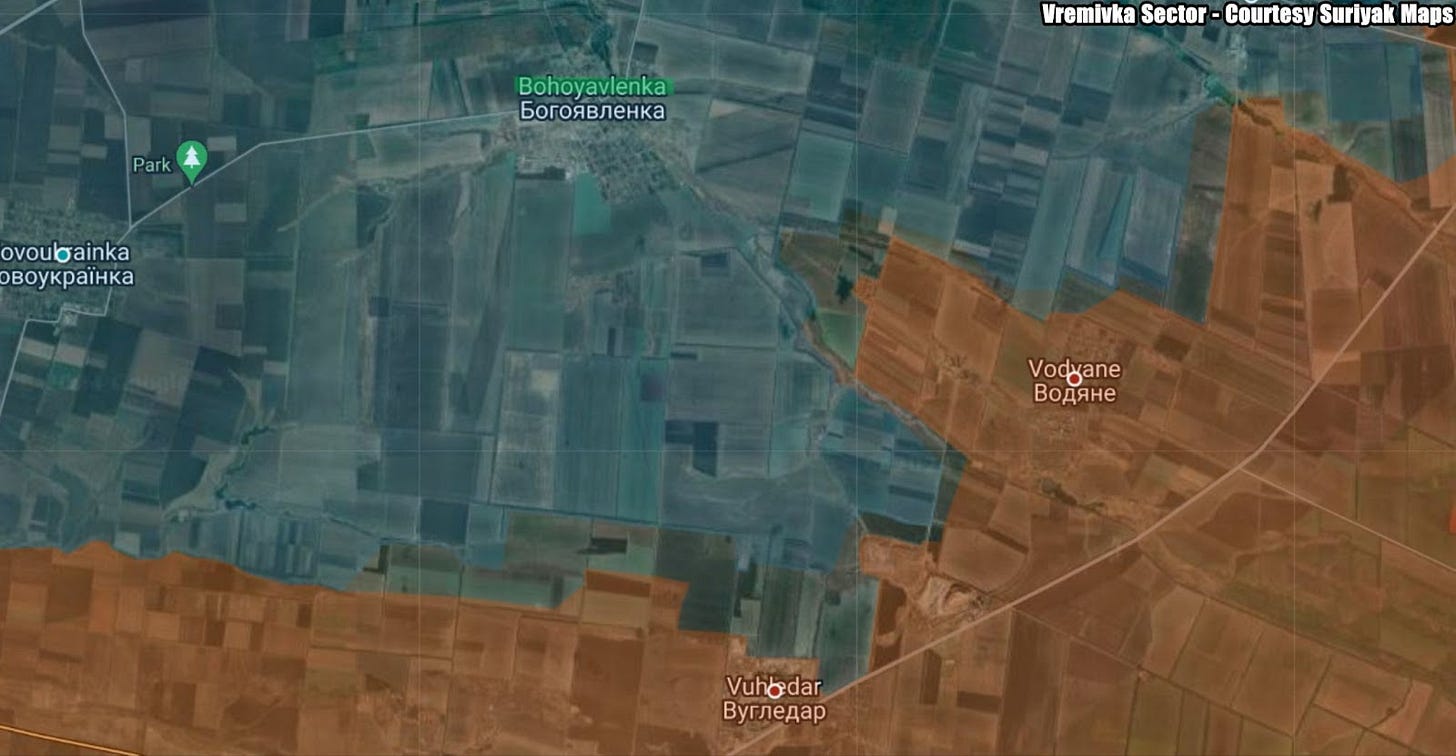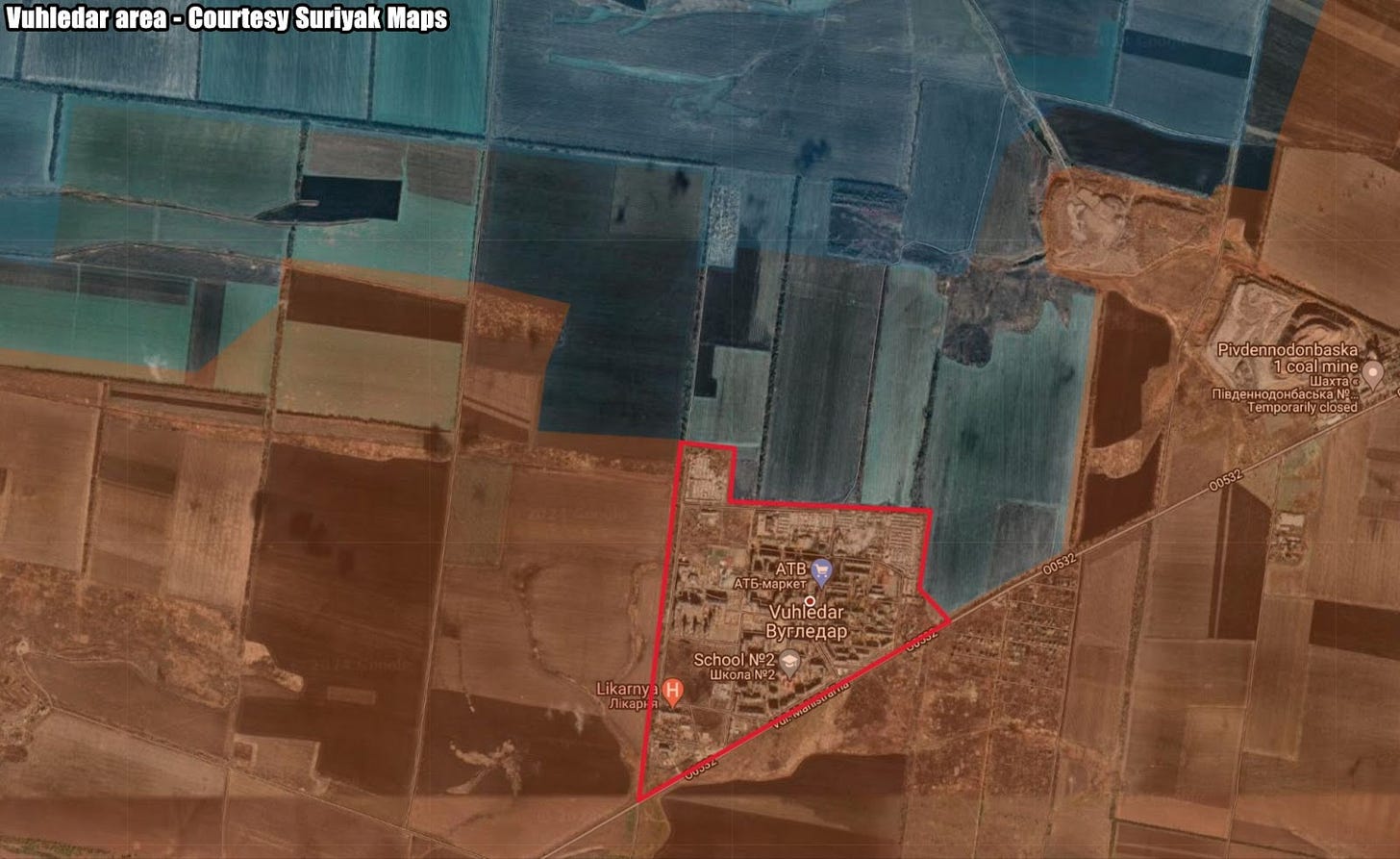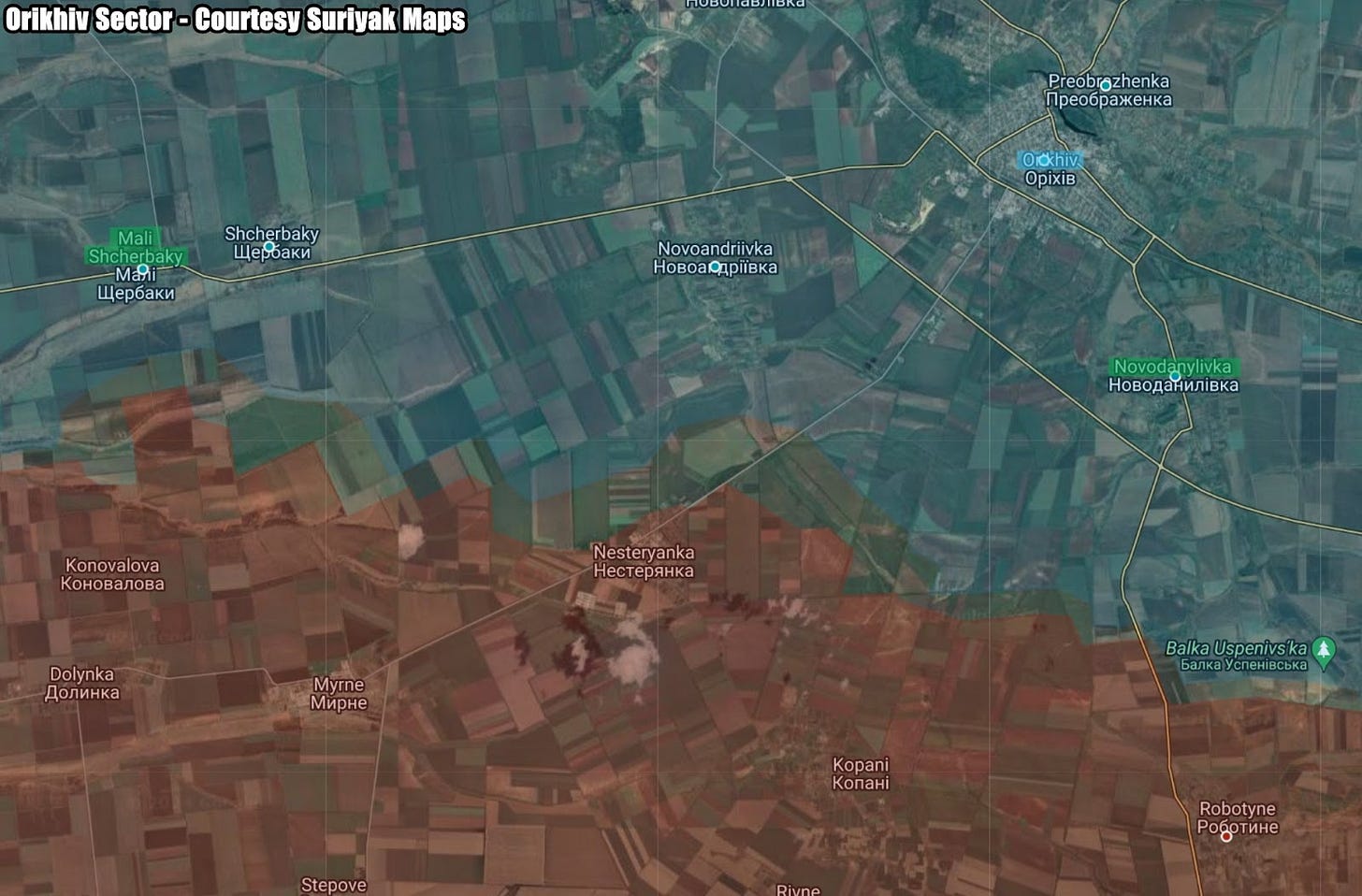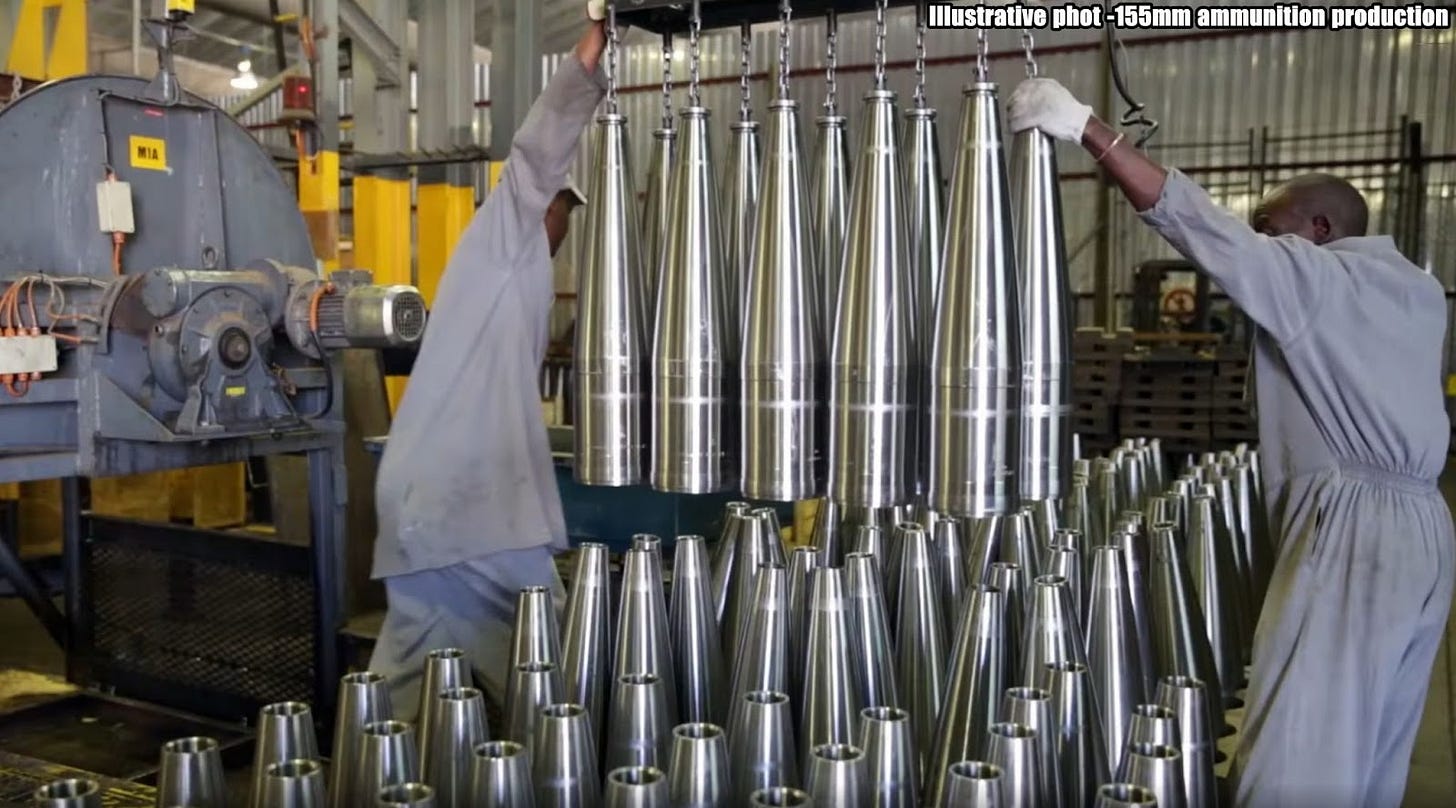I appologise for the brevity of todays Brief due to technical issues
Slava Ukraini! In early 2022 I began a Telegram channel aggregating news from a number of sources daily on the war in Ukraine. In June 2023 I began providing a daily draft for the Ukraine War Brief Podcast collecting news from over 70 sources daily, much of which formed the basis of the script. While the Podcast no longer exists I have continued to make this Brief available both on my own Substack and The People’s Media for those who wish to keep up with events on a daily basis.
All the latest news on the Russo-Ukraine War 6 days per week
ALONG THE CONTACT LINE
GSAFU Morning Report
The General Staff of the Armed Forces of Ukraine in its Operational Information update at 22:00 on Oct 1 stated that day 952 of the full-scale invasion of the Russian Federation against Ukraine was about to begin.
During the past day, 110 combat engagements took place. Over the past 24 hours, the enemy carried out 2 missile strikes, 59 air strikes, 446 drone strikes and more than 2,713 artillery strikes across the positions of Ukrainian forces.
At the same time, Ukrainian soldiers continue to inflict losses in manpower and equipment on the occupying troops, exhausting the enemy along the entire front line and continue to disrupt the plans of Russian occupiers to advance deep into the territory of Ukraine.
Air Force Daily Report
On the night of October 2, 2024, the enemy attacked Ukraine with 32 attack UAVs of the "Shahed" type (launch areas: Primorsko-Akhtarsk, Kursk - Russian Federation).
As a result of anti-aircraft combat by aviation, anti-aircraft missile units, EW and mobile fire groups of the Defense Forces of Ukraine, 11 attack UAVs were shot down in the Kirovohrad, Odesa and Sumy regions.
Four enemy drones left the airspace of Ukraine in the direction of Russia.
As a result of countermeasures by EW, 10 attack UAVs were lost in location in the northern and central regions, the information is being clarified.
The Russian Border Incursion
Ukrainian forces continue offensive operations in Kursk
The Institute for the Study of War (ISW), a US based think tank, in its Oct 1 Russian Offensive Campaign Assessment assessed that Ukrainian forces continued offensive operations west of the Ukrainian salient in Kursk Oblast in Glushkovsky Raion on Sep 30 and Oct 1, but did not advance. Russian sources, including the Russian MoD, claimed that Russian forces repelled Ukrainian offensive operations near Novy Put and Veseloye (both southwest of Glushkovo) and that Ukrainian strikes on Krasnooktyabrsky (southeast of Veseloye) suggest that Russian forces still control the settlement. Elements of the Russian 56th Airborne (VDV) Regiment (7th VDV Division) continue to operate in Glushkovsky Raion.
Russian sources claimed that Russian forces recently advanced southeast of Sudzha within the Ukrainian salient in Kursk Oblast. Russian sources claimed that Russian forces repelled Ukrainian attacks near Plekhovo and advanced near Borki (both southeast of Sudzha), although ISW has not observed visual evidence of Russian advances near Borki. Russian sources also claimed that Russian forces made unconfirmed advances between the forest areas of Kucherov and the Brodina gully (on the international border southeast of Sudzha) and that Ukrainian forces continued attacking near Kremyanoye (east of Korenevo). Chechen Akhmat Spetsnaz Commander Apty Alaudinov claimed on Oct 1 that Russian forces seized two unspecified settlements in Kursk Oblast. Drone elements of the Russian 810th Naval Infantry Brigade (Black Sea Fleet [BSF], Southern Military District [SMD]), artillery elements of the 83rd Separate VDV Brigade, and the ”Smuglyanka” Detachment are reportedly operating in Kursk Oblast.
Ukrainian Pivnich (Northern) Operational Command Spokesperson Vadym Mysnyk stated on September 30 that Russian forces have significantly increased the size of their grouping of forces in Kursk Oblast but are still unable to use the quantitative manpower advantage to decisively push Ukrainian forces from the region. Mysnyk implied that Russian personnel lack the necessary training and combat experience to fully leverage their manpower advantage and that Russian manpower deployments are dependent on Russian transportation infrastructure and geographical terrain features. Mysnyk added that Russia continues to use conscripts and border guards in Kursk Oblast.
The Khortytsia operational-strategic group
(Responsible for the northeastern part of Ukraine. )
Kharkiv Sector: Over the last day Ukrainian Defense Forces repelled 5 Russian attacks near Starysya and Vovchansk.
Kupyansk Sector: Russian Forces carried out 23 unsuccessful offensive actions against Ukrainian defensive positions near Synkivka, Hlushkivka, Kolisynivka and Kruhlyakivka, 10 engagements continue.
Lyman Sector: Russian Forces carried out 15 offensive actions against Ukrainian defensive positions near Hrekivka, Nevske, Novosadove and Serebryanka. 3 engagements continue.
Siversk Sector: There has been no significant change in the combat environment in the last 24 hours.
Kramatorsk Sector: Russian forces carried out 5 offensive actions near Hryhorivka, Chasiv Yar and Stupochky.
Toretsk Sector: Russian forces carried out 10 offensive actions with air support near Toretsk and Shcherbynivka. 5 engagements continue.
The Tavria operational-strategic group
(Responsible for the central-eastern and southeastern part of Ukraine.)
Pokrovsk Sector : Throughout the day, Russian forces carried out 22 assault and offensive actions The greatest activity of Russian occupiers is kept in the regions of Yelyzavetivka, Myrolyubivka and Lysivka. 3 confrontations are still ongoing.
Kurakhove Sector: The enemy, supported by aviation, made 21 assaults on Ukrainian positions near Hirnyk, Heorhiivka, Katerynivka and Konstantinivka. 5 engagements continue.
Vremivka Sector: Russian forces tried to twice break through Ukrainian positions near Bohoyavlenka.
ISW - Russian forces capture Vuhledar
The Institute for the Study of War (ISW), a US based think tank, in its Oct 1 Russian Offensive Campaign Assessment assessed that Russian forces likely seized Vuhledar as of October 1 following a reported Ukrainian withdrawal from the settlement, though it is unclear if Russian forces will make rapid gains beyond Vuhledar in the immediate future. Geolocated footage published on Sep 30 and Oct 1 shows Russian forces planting Russian flags and freely operating in various parts of Vuhledar, and Russian milbloggers claimed on Oct 1 that Russian forces seized the settlement.
A Ukrainian servicemember reported on Oct 1 that a part of the Ukrainian force grouping conducted a planned withdrawal from Vuhledar to avoid encirclement, and Russian milbloggers claimed that Ukrainian forces began to withdraw from Vuhledar as of the end of September 30.
Russian milbloggers claimed that Russian forces did not completely interdict Ukrainian egress routes before Ukrainian forces withdrew but that Russian artillery and drones inflicted unspecified losses on withdrawing Ukrainian personnel. The scale of Ukrainian casualties is unknown at this time, however, but the widespread reports of Ukrainian withdrawal suggest that the larger Ukrainian contingent likely avoided a Russian encirclement that would have generated greater casualties.
Orikhiv Sector: Russian forces made 3 assaults against Ukrainian positions near Mali Shcherbaky and Novodanylivka. 1 attack is ongoing.
The Odesa operational-strategic group
(Responsible for Kherson, Qırım, (also known as Crimea) and the Black Sea.)
Prydniprovsk Sector: There has been no significant change in the combat environment in the last 24 hours.
TEMPORARILY OCCUPIED TERRITORIES
Nothing major to report.
THE HOME FRONT
Ukraine ramps up arms production, can produce 4 million drones a year
Ukraine can produce four million drones annually and is quickly ramping up its production of other weapons, President Volodymyr Zelenskyy said in comments authorised for publication on Wednesday. Reuters reports.
Speaking on Tuesday to executives from dozens of foreign arms manufacturers in Kyiv, Zelenskyy said Ukraine had already contracted to produce 1.5 million drones this year. Drone production was virtually non-existent in Ukraine before Russia's invasion in February 2022.
"In extremely difficult conditions of the full-scale war under constant Russian strikes, Ukrainians were able to build a virtually new defence industry," said Zelenskiy.
Ukraine tripled its overall domestic weapons production in 2023 and then doubled that volume again in just the first eight months of this year, Prime Minister Denys Shmyhal told the same gathering. Ukrainian officials gave no absolute figures.
More than 31 months into its war with invading Russian forces, and with no end in sight, Ukraine now spends roughly half of its state budget - or about $40 billion - on defence. Ukraine also receives large amounts of military as well as financial support from its Western allies.
Russia, which is much larger and richer than its southern neighbour, is expected to hike its own military spending by 25% next year from its 2024 level, to about $145 billion.
Ukrainian officials say they expect foreign funding to steadily diminish while its defence needs continue to balloon. Kyiv is increasingly focused on producing as much as possible domestically. Shmyhal said the government plans to increase spending to help bolster growth in domestic weapon production in 2025.
"Next year's budget envisages a 65% increase in funds for weapon purchases. This is an increase of almost $7 billion," Shmyhal told the forum. He said Ukraine's strategic task was to increase its domestic long-range capabilities and create conditions to have a technological advantage over Russian forces.
Moscow forces have been steadily advancing in Ukraine's eastern Donetsk region and on Wednesday claimed complete control of the small mining town of Vuhledar.
The ability to strike deep inside Russia is a priority for Ukraine. Zelenskyy has been seeking permission to use Western long-range missiles for strikes inside Russia, so far without any agreement.
"Among our strategic tasks is to strengthen the long-range capability of Ukrainian weapons, so that there is no safe place in the European part of Russia where the "debris" of our drones and missiles could not reach," Shmyhal said.
RUSSIAN WORLD
Russia To Accept Mandarins Instead of Money Amid Payment Difficulties
Russian companies have established a barter trade system with Pakistan to facilitate economic exchanges without the need for monetary transactions, as they seek to overcome challenges with payments related to Western sanctions on Moscow. The Moscow Times reports.
The alternative trade arrangement was signed at the first Pakistan-Russia Trade and Investment Forum in Moscow. According to the Russian state media outlet TASS, the first Russian company to use the mechanism will be Astarta-Agrotrading, which will supply Pakistan with chickpeas and lentils. Pakistan’s Meskay + Femtee Trading Company will reciprocate by providing mandarins and rice.
Under the terms of the agreement, Russia will export 20,000 tons of chickpeas, while Pakistan will supply an equivalent amount of rice. Another contract stipulates that Russia will send 15,000 tons of chickpeas and 10,000 tons of lentils in exchange for 15,000 tons of mandarins and 10,000 tons of potatoes.
According to Nasir Hamid, Pakistan's deputy commerce minister, the barter system was created due to “difficulties with mutual payments."
While monetary transactions are under increasing scrutiny due to international sanctions against Russia in retaliation for its invasion of Ukraine, barter schemes offer companies a way to circumvent complications by exchanging goods directly rather than involving bank payments. Such deals help avoid attention from monitoring organisations tasked with ensuring compliance with sanctions.
This is not Russia's first exploration of barter trade as a solution to payment issues. In August, Reuters reported that Russia had been in discussions with China about resuming barter trade, particularly in metals and agricultural products. However, that project has been slow to gain momentum, as individual companies have struggled to meet the specific needs of both sides.
NEWS WORLDWIDE
EU ambassadors approve new regime targeting Russia's hybrid threats
European Union ambassadors agreed on a new sanctions regime targeting Russia's hybrid threats on Wednesday, Oct. 2. New Voice reports citing news first shared by Radio Free Europe journalist Rikard Jozwiak on Twitter. According to Jozwiak, the new mechanism will take effect next week.
Earlier, he noted that the EU initially planned a general sanctions regime but later decided to focus specifically on Russian threats. Currently, no individuals are named in the sanctions, but names will be added in the future.
On Sep. 12, leading global companies and services announced their exit from the Russian market and introduced new restrictions. Among them were Google, Slack, and Notion.
The same day, anti-Russian sanctions introduced by the United States in June 2024 came into effect. The U.S., home to many major tech companies, banned providing IT and software services to Russian users. This includes IT consulting, project services, IT support, and cloud services.
On Sep. 24, New Zealand imposed new sanctions against five individuals and six companies from Russia and Belarus.
On Sep. 26, the UK government announced sanctions against five vessels and two companies involved in transporting Russian liquefied natural gas (LNG), particularly as part of the Arctic LNG 2 project.
On Oct. 1, the U.S., UK, and Australia announced sanctions against individuals and entities linked to the Russian cybercriminal group Evil Corp.
Ukraine, Czechia set to jointly produce 155mm shells
The announcement was made following the Second International Forum of Defense Industries (DFNC2), Ukrinform reports.
Ukrainian Armour signed a package of documents regarding cooperation with the Czech Czechoslovak Group (CSG) Holding. One deal concerns the supply of components, and the other – the licensing of ammunition production (technology and documentation transfer for the production of artillery rounds).
According to the report, it is about the production of standard 155mm high-explosive munitions 155 MM HE M107, as well as 155mm munitions with a range of 43km with the Base Bleed unit and 155mm munitions with a range of 37 km with the Boat Tail unit. In addition, the production of other artillery rounds, as well as NATO-caliber tank rounds, has been planned. Production should kick off in early 2025.
According to Vladyslav Belbas, the Ukrainian company CEO, next year’s output target is 100,000 rounds, and more than 300,000 for 2026. The process of preparing the manufacturing equipment has already started.
Part of the ammunition will be manufactured in Ukraine, and part – in the Czech Republic, which will enable companies to increase production volumes and reduce the cost of the finished round.
As reported, the Artem Holding has set up the import of TNT to cover its production. But due to the dependence on nitrocellulose, propellant charges remain the biggest problem in projectile production.
MILITARY & TECH
US company AeroVironment plans to start producing Switchblade loitering munitions in Ukraine
The U.S.-based AeroVironment signed an agreement with a Ukrainian company to localize its production of Switchblade 600 loitering munitions, marking the latest of several recent agreements between Ukrainian and foreign companies to produce weaponry in Ukraine. The Kyiv Independent reported.
The Ukrainian company is not being named because of security reasons. The agreement was signed on Oct. 1 during the DFNC2 International Defense Industries Forum in Kyiv, where nearly 300 companies from over 30 countries attended.
The Switchblade 600 is a loitering munition used to strike targets by crashing into them. They have a flight range of 40 kilometers or more, and can stay in the air for over 40 minutes.
Brett Hush, a senior vice president at AeroVironments who signed the agreement in Kyiv, praised the Switchblade's performance and added, "with the support and feedback from Ukraine, it'll be even better."
The Switchblade 600 has been included as part of U.S. assistance packages to Ukraine since 2022.
That’s it for today’s Draft folks if you would like to keep up with events in Ukraine daily please consider subscribing, its free!
Feel free to share this update with your friends. Heroyam Slava!







